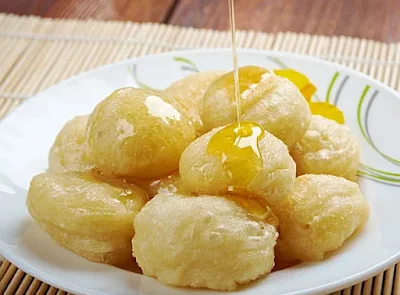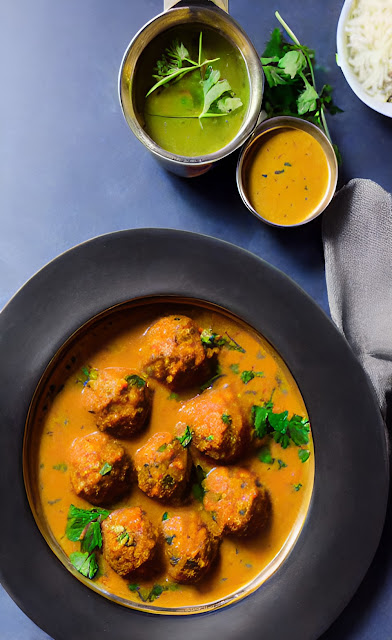Loukoumades, the greek donuts
Loukoumades are the Greek equivalent of donuts but with an oriental twist. They are found throughout the Middle East under different names but they are all the same: a dough, usually in the form of a ball or donut that is fried and then sweetened by bathing it with syrup or directly with honey. They are extremely popular in Greece and Cyprus, where they are never lacking as treats given to children or accompanying the typical cup of Greek coffee.
As touching them means getting your hands quite sticky, they are usually skewered on a toothpick to avoid direct contact, although there are some types that are quite dry and no longer need this trick. When you buy them at a street stall they are served in this way, 4 or 5 in a little cardboard tray with a toothpick stuck in each of them.
Like donuts, there are infinite varieties: with sugar glaze, with icing sugar, with a crunchy chocolate layer, fillings, etc, etc. These that I explain below are the most typical and traditional ones with a bath of honey syrup but if you do not want to have that unpleasant sensation of sticky fingers, either prick them with a toothpick or replace the syrup bath with icing sugar (increasing, yes, the amount of sugar in the dough).
The origin of the loukoumades is uncertain. Although some indicate that it is Arabic - for example, they are very popular in Saudi Arabia under the name of Loukemat - others say that they were already given as a present to Greek athletes who won competitions in the Olympics, which, if confirmed, would reveal that they have a history of more than 2,500 years.
Loukomades are made with yeast-leavened dough that is fried in oil and then dipped in syrup (in some cases, dipped directly in honey).
INGREDIENTS
- 450 grams (1 lbs) of flour
- 250 ml (1 cup and a quarter) of water
- 250 ml (1 cup and a quarter) of milk
- 80 ml (4 tbsp) of extra virgin olive oil
- 2 tablespoons of sugar
- 20 grams (1 tbsp) of baker's yeast (dry)
- 1 pinch of salt
- Sunflower, canola or corn oil for frying
for the syrup
- 1 cup of honey (200 ml)
- 1 cup of water (200 ml)
- 3 spoonfuls of sugar
- 1 teaspoon of lemon juice
Let's first prepare the syrup. In a deep saucepan pour the three tablespoons of sugar and the teaspoon of lemon juice. Put on low heat until thick. Then add the glass of honey and the glass of water. Bring to a boil, add the honey and lower the heat so that it thickens slightly and above all so that the honey leaves its aroma. Reserve and keep warm.
Second, we are going to prepare the dough.
In a large bowl add the warm water (20 seconds in the microwave), the sugar and the yeast. Mix well and wait 10 minutes.
Then add the previously sifted flour without stopping beating, as well as the rest of the ingredients (milk, oil...) and mix well. If you have a kneading machine, it is time to use it.
Once we have a homogeneous mass, we cover it with a cotton cloth and let it rest in a warm, dark place without drafts. We will wait 1 hour for the yeast to grow.
Now we can make and fry the loukoumades.
If you have a fryer, the correct temperature to make them is 160 degrees (320 f). Otherwise, use a deep frying pan with a lot of oil (the ball of dough should not touch the bottom) over medium heat.
To make the balls, a spoon is used that is previously submerged in oil so that it does not stick. Every cook has his technique. Mine consists of taking the amount of dough that fits in a normal soup spoon and with your hand or another spoon (also previously submerged in oil) slide the ball into the hot oil. Each time a ball is made, the spoon must be previously dipped in oil (it is the same whether it is olive oil, sunflower oil or any other type).
The loukoumades will begin to fry with a lot of bubbling. When they inflate, float on the surface of the oil and look golden, remove them and let them drain on a rack or on absorbent paper. When they are fried especially that they do not touch, at least in principle. Fry a small amount at a time.
The syrup is poured over them and they are ready to eat, warm or at room temperature. When you try them you will understand why they are the favorite sweets of the Greeks and Cypriots.





Comments